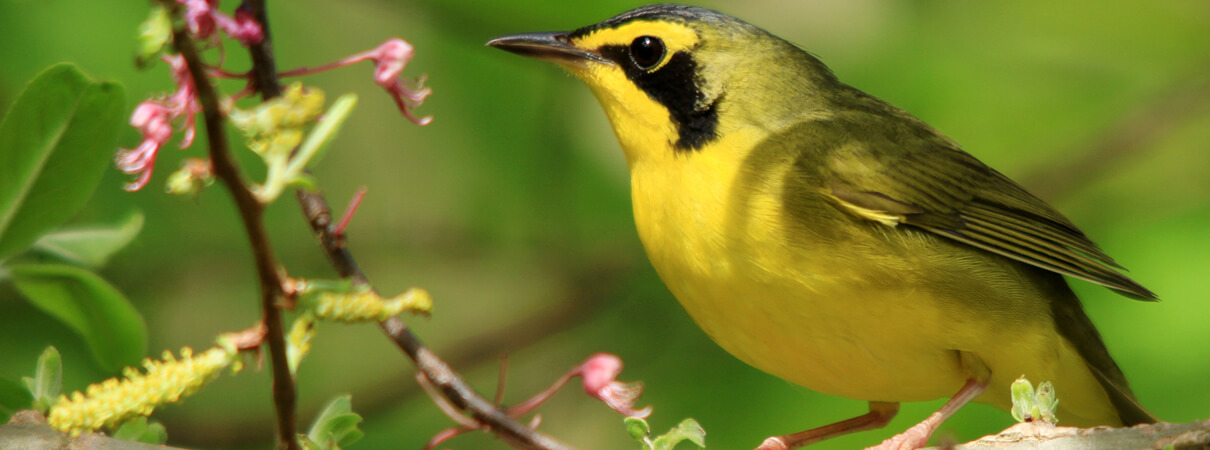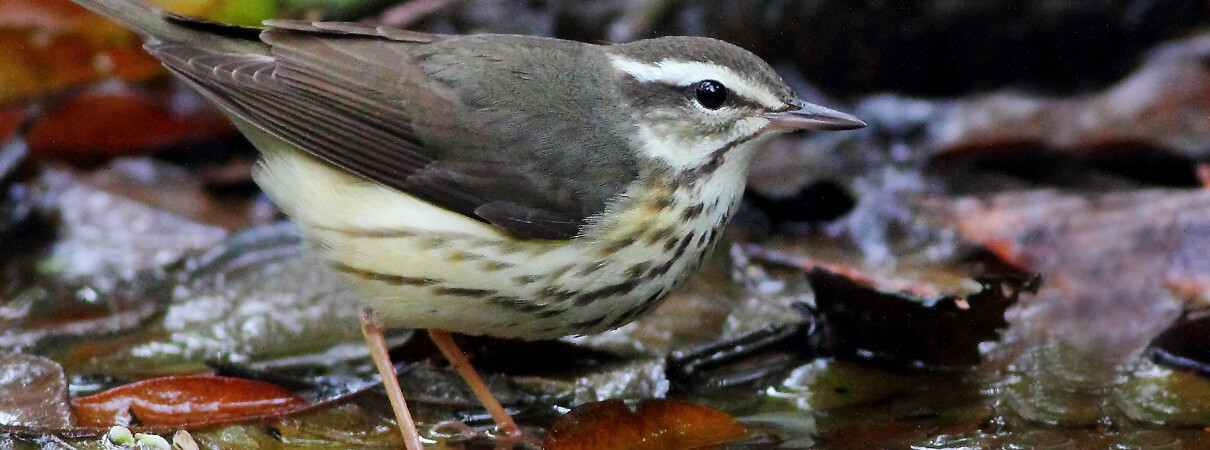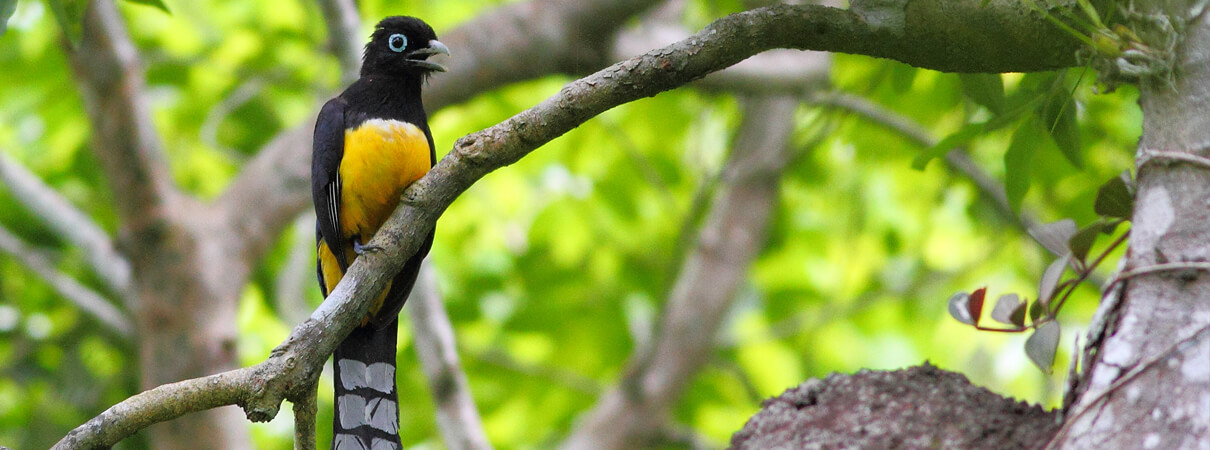Migratory Birds Gain Protection of Winter Habitat in Guatemala
Wood Thrush, Kentucky Warbler, and many other neotropical migratory birds spend the winter in Central America, where ecosystems like the Caribbean rainforests of Guatemala provide critical habitat. More than a hundred species pass through the region or overwinter there.
But that landscape, once a continuous swath of forest, has been increasingly fragmented by agriculture. Those losses have contributed to population declines among at least 19 species of migratory birds, including Wood Thrush.

Wood Thrush, Paul Reeves Photography/Shutterstock
The Guatemalan conservation group FUNDAECO, working with ABC and the World Land Trust, has secured a key piece of this threatened habitat, acquiring 1,672 acres from a local landowner to create the Tapon Creek Nature Reserve. The purchase helps create a vital lowland habitat corridor that connects two existing protected areas, Biotopo Chocon Machacas (15,360 acres) and Rio Sarstun (4,447 acres).
“Habitat conservation in the Caribbean region of Guatemala is essential in order to tackle population declines of neotropical migratory birds,” said Marco Cerezo, FUNDAECO's Executive Director. “Lowland and flooded forests have a unique ecological role and importance for diversity, linking ecological niches across the region. Without them, we would only be preserving ‘biological islands' in the protected mountaintops of the region.”
Agricultural Threats to Migratory Birds
Guatemala's conservation efforts focused originally on rare, high-elevation cloud-forest peaks, according to Jason Berry, ABC's International Conservation Program Officer. That approach made sense when the lowland forests were plentiful. “But in a mountainous country like Guatemala, the lowland areas are the first to be deforested for agriculture,” Berry said.

Kentucky Warbler, Tessa Nickels
The rise of industrial farming has made the problem worse. Satellite images of the area from 20 years ago show a region “all lush and green with lowland forest,” Berry said. Now those areas look like “checkerboards of brown cattle pasture, networks of roads, and dark, sterile rows of oil palm trees,” he said. If FUNDAECO and its partners hadn't stepped in to secure Tapon Creek, “we'd be looking at another map of a wrecked landscape for birds.”
‘Ridge to Reef' Conservation
The Tapon Creek Reserve enjoys a strategic location that makes it especially valuable for habitat conservation: It belongs to the single largest remnant of lowland tropical rainforest in Caribbean Guatemala.
“Finding intact lowland rainforest has become more and more difficult, and finding land like this with a motivated seller is even harder,” Berry said. At Tapon Creek, “luckily all the ingredients for a successful land purchase came together.” The landowner gave FUNDAECO and its partners a significant discount on the final price of the property as a thank-you for prompt payments and for closing the deal ahead of schedule.

Louisiana Waterthrush, Greg Homel
The expanded reserve will protect not just lowland forest but rare coastal dwarf mangroves, sea grasses in the Cocoli Bay, and the King Fish reefs, part of the Mesoamerican Barrier Reef System. This “ridge to reef” conservation approach benefits not just birds but other species such as tapir, jaguar, peccary, and the West Indian manatee.
Good Neighbors
The creation of the Tapon Creek Reserve will also benefit the area's human residents. FUNDAECO works with nearby communities to educate them about the benefits of reserves. It involves them in efforts to manage protected areas, control illegal activities, and increase ecotourism in what's becoming known as the “Conservation Coast.” And it's working with local fishermen's groups on coastal and marine restoration.
To reduce deforestation and build goodwill, FUNDAECO is also helping communities in the area secure title to their land. “Conservation can't be achieved by simply putting a fence around a property and expecting it to protect itself,” Berry said.
Up the Creek
Getting to Tapon Creek isn't easy. On a trip there in October, Berry took a small shark boat—“think canoe with a 500-horsepower outboard motor”—along the 30-mile length of a large freshwater lake, through a narrow forest gorge, past a coastal Afro-Caribbean town named Livingston, then up a slow-moving creek lined with dwarf mangroves.
From there, he and some FUNDAECO colleagues hiked a muddy trail into the jungle. “At first we saw nothing—but then a brown bird with a white chest and bold black spots landed on a dwarf understory palm,” he recalls. It was the first Wood Thrush of the season. Then the visitors spotted more birds: a Plain Antvireo, a Kentucky Warbler, a Black-headed Trogon.

Black-headed Trogon, Greg Homel
Some of these birds traveled a very long way to get to this lowland Guatemalan forest. “Near the creek I heard the familiar call notes of a Louisiana Waterthrush that the previous month could have been in ABC's back yard in Virginia,” Berry says. Thanks to the work of FUNDAECO and its international and local partners, the birds have a better chance of making it safely through the winter before returning north in the spring.
More than 25 other migratory wood-warblers benefit from the Tapon Creek reserve. A few of these species include Black-and-white, Chestnut-sided, Hooded, Magnolia, Worm-eating, and Yellow Warbler, along with American Redstart and Ovenbird.


















































